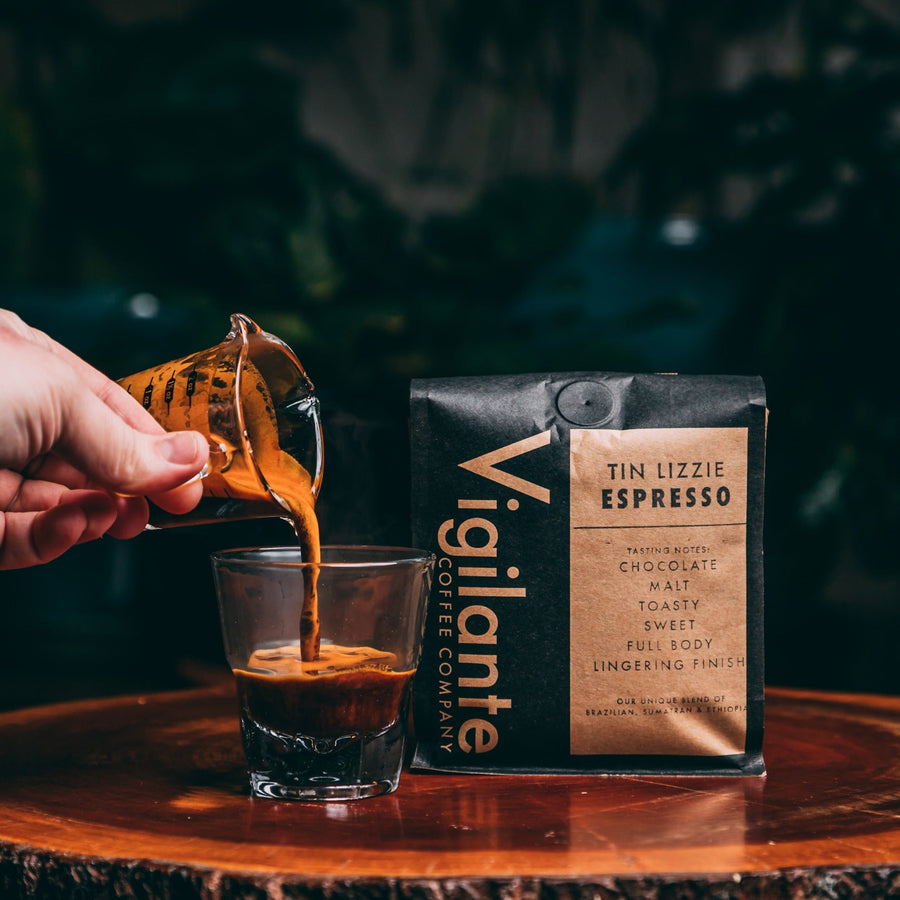SOE Single Origin Espresso – Celebrating Flavors from One Region
SOE Single Origin Espresso – Celebrating Flavors from One Region
Blog Article
Comprehending Coffee Beans: the Journey From Espresso to Blended Coffee Beans

The Origins of Coffee: A Worldwide Viewpoint
While you could think about coffee as a modern staple, its beginnings trace back centuries, intertwining with societies across the world. The story starts in Ethiopia, where legend states a goat herdsman named Kaldi uncovered the stimulating results of coffee beans after observing his goats romping energetically after consuming them. This stimulated passion, bring about coffee's spread to Arab traders that cherished the brewed beverage. By the 15th century, it got to Persia, Egypt, and Turkey, where coffeehouses came to be social hubs for discussion and culture.
As trade routes broadened, coffee made its method to Europe in the 17th century, swiftly obtaining appeal. Each society included its unique twist to coffee preparation, enriching its history.
Growing and Harvesting of Coffee Beans
As coffee's trip advanced, the focus moved to the farming and harvesting of details bean varieties, specifically those used for espresso. You'll discover that coffee beans frequently originate from Arabica or Robusta plants, each offering distinct tastes. The perfect growing problems consist of high elevations and rich, well-drained soil, which boost the beans' quality.
Throughout the harvest, choosing techniques vary. In some regions, employees hand-pick ripe cherries, ensuring just the ideal fruit mosts likely to processing. In other locations, mechanical farmers are utilized, particularly on larger farms. Timing is vital; you wish to collect when the cherries get to peak perfection for maximum flavor.
When collected, the beans are gotten ready for handling, which is important in identifying their final taste. Understanding the growing and collecting procedures provides you insight into what enters into your preferred coffee, enhancing your gratitude for each and every cup.
Handling Techniques: From Cherry to Bean
Now that you've found out about harvesting coffee beans, let's check out how those cherries change into the coffee beans you like. You'll see just how different harvesting strategies effect taste, complied with by the important actions of fermentation and drying. We'll damage down the milling and grading process that establishes your coffee's top quality.
Harvesting Techniques Described
When it concerns coffee, understanding harvesting techniques is necessary, since they straight influence the flavor and high quality of the beans you enjoy. There are two main approaches: selective picking and strip selecting. Discerning picking includes hand-picking just ripe cherries, ensuring you get the very best high quality beans. This approach typically causes a richer taste profile, though it's more labor-intensive. On the other hand, strip choosing ways collecting all cherries at the same time, despite ripeness. While it's quicker and less costly, this can cause a mix of tastes, affecting the final product. Eventually, the option of collecting strategy can significantly influence your coffee experience, so it's worth understanding just how those beans made it to your mug.
Fermentation and Drying Out
After collecting, the following action in handling coffee beans play a substantial duty in forming their taste. You'll find that fermentation is crucial, as it aids break down the mucilage bordering the beans, enhancing their preference account. Depending on the approach, this process can last from a few hours to several days, with differing outcomes based on temperature level and moisture.
When fermentation is complete, drying out complies with, which is similarly important. You can pick from sun-drying or mechanical drying out techniques. Sun-drying enables the beans to absorb tastes from the atmosphere, while mechanical drying warranties regular wetness levels no matter climate. Proper drying out is important to avoid mold and preserve the beans' quality, eventually affecting your cup of coffee.
Milling and Grading Process
As fermentation and drying set the stage for taste growth, the milling and grading procedure guarantees that only the finest coffee beans make it to your cup. This phase entails removing the outer layers of the coffee cherry, consisting of the parchment and husk. High-quality beans get a higher quality, resulting in a richer coffee experience.
Roasting Techniques: Unlocking Flavor Prospective
When you roast coffee beans, the approach you choose can substantially influence the flavor profile. Comprehending the connection in between time, temperature level, and roasting techniques is essential to disclosing the possibility of your mixture. Allow's explore exactly how these elements come with each other to produce the excellent mug.
Roasting Techniques Discussed
While you might believe that all coffee roasting techniques yield the very same results, the truth is that each strategy exposes unique taste possibilities in the beans. Drum roasting utilizes a turning drum to uniformly disperse warmth, boosting caramelization and producing a balanced taste. Air roasting, on the other hand, flows warm air around the beans, advertising a lighter roast with obvious acidity.

Influence On Flavor Account
Various roasting approaches not just influence the process however also considerably impact the taste profile of the coffee beans. Dark roasts, on the various other hand, bring out strong, great smoky flavors, occasionally masking the bean's unique characteristics. Understanding these nuances helps you appreciate the virtuosity behind your mug of coffee, boosting your total experience with every sip.
Time and Temperature Level Variables
To launch the complete taste capacity of coffee beans, both time and temperature level throughout the roasting process play substantial roles. When roasting, you'll discover that higher temperatures can promptly establish tastes, but if you rush it, you might finish up with burned notes. On the other hand, reduced temperatures permit a much more steady flavor development, showcasing the beans' special features.

Timing is equally as crucial; extending the roast also long can bring about a loss of acidity and illumination, while too brief a roast may leave the beans underdeveloped. Locating that wonderful area requires practice and experimentation. By readjusting these aspects, you can reveal the abundant, complicated flavors hidden within each bean, developing an absolutely exceptional coffee experience.
The Art of Blending: Crafting Special Coffee Accounts

Beginning by picking a base coffee that offers a strong structure. An intense Ethiopian bean can bring fruitiness, while an abundant Brazilian coffee includes body.
As you mix, keep in mind that each combination tells a tale. You're not simply making coffee; you're developing an see this experience. So, take your time, taste often, and appreciate the trip of discovering your trademark blend.
Brewing Methods: Just How Prep Work Influences Taste
Blending coffee opens up a domain of taste opportunities, yet exactly how you make that mix can considerably influence your final cup. Different brewing techniques draw out one-of-a-kind flavors and scents, so it's crucial to choose intelligently. As an example, a French press permits oils and sediments to continue to be, producing a rich, robust experience. On the various other hand, a pour-over highlights the coffee's clearness and brightness, perfect for showcasing fragile notes.
Espresso, with its high stress, creates a concentrated shot that accentuates sweet taste and crema. If you like a lighter brew, consider a cold brew technique; it produces a smooth, much less acidic preference.
Readjusting variables like water temperature level, grind dimension, and make time can transform your coffee's account. Welcome the art of developing to find the flavors concealed in your coffee blends.
The Future of Coffee: Sustainability and Advancement
As the coffee market advances, sustainability and technology are coming to be necessary for attending to environmental obstacles and meeting consumer demands. You'll see that more coffee business are taking on eco-friendly methods, from sourcing beans morally to implementing sustainable farming methods. These shifts not just aid the earth but also improve the high quality of the coffee you appreciate.
You might see developments like eco-friendly product packaging and water-saving developing approaches that reduce waste. Advanced innovation, such as blockchain, is likewise ending up being preferred, ensuring transparency in the supply chain, which enables you to trace your coffee back to its origins.
In enhancement, purchasing neighborhood communities and sustaining farmers via fair profession initiatives fosters a much navigate to these guys more sustainable coffee environment. As you sip your next cup, keep in mind that your choices can contribute to a brighter future for coffee. By choosing sustainable brand names, you're not simply delighting in a beverage; you're making a positive impact on the world.
Frequently Asked Questions
What Is the Difference Between Arabica and Robusta Beans?
Arabica beans are smoother, sweeter, and have a higher level of acidity, while robusta beans are stronger, a lot more bitter, and consist of even more caffeine. When making your coffee., you'll see these distinctions in taste and aroma.
How Does Altitude Affect Coffee Bean Taste?
Elevation influences coffee bean flavor considerably. Higher altitudes create beans with brighter acidity and facility flavors, while lower elevations usually generate beans that are heavier and much less nuanced. You'll discover these differences in your cup!
What Are the Health Conveniences of Drinking Coffee?
Drinking coffee can boost your power, improve psychological focus, and even enhance physical efficiency. It's abundant in antioxidants, might reduce the risk of particular illness, and can advertise a healthier metabolic rate when consumed in small amounts.
Can Coffee Beans Be Recycled for Brewing?
Yes, you can recycle coffee beans for developing, but the taste could be weaker. If you appreciate exploring, attempt reusing them in different methods, like cold brews or contributing to healthy smoothies for an added kick.
Exactly how Should I Shop Coffee Beans for Freshness?
To you can try these out maintain your coffee beans fresh, store them in a closed container in an awesome, dark area. Prevent exposing them to dampness, heat, or light, as these elements can quickly deteriorate their flavor and aroma.
Comprehending Coffee Beans: the Journey From Coffee to Blended Coffee Beans.
Now that you've found out about harvesting espresso beans, let's check out exactly how those cherries change right into the coffee beans you enjoy.When you roast coffee beans, the approach you pick can substantially influence the flavor profile - Single Origin Espresso.While you might think that all coffee roasting approaches yield the exact same outcomes, the truth is that each technique reveals special taste possibilities in the beans.Different roasting approaches not only influence the process yet also considerably influence the flavor profile of the coffee beans
Report this page